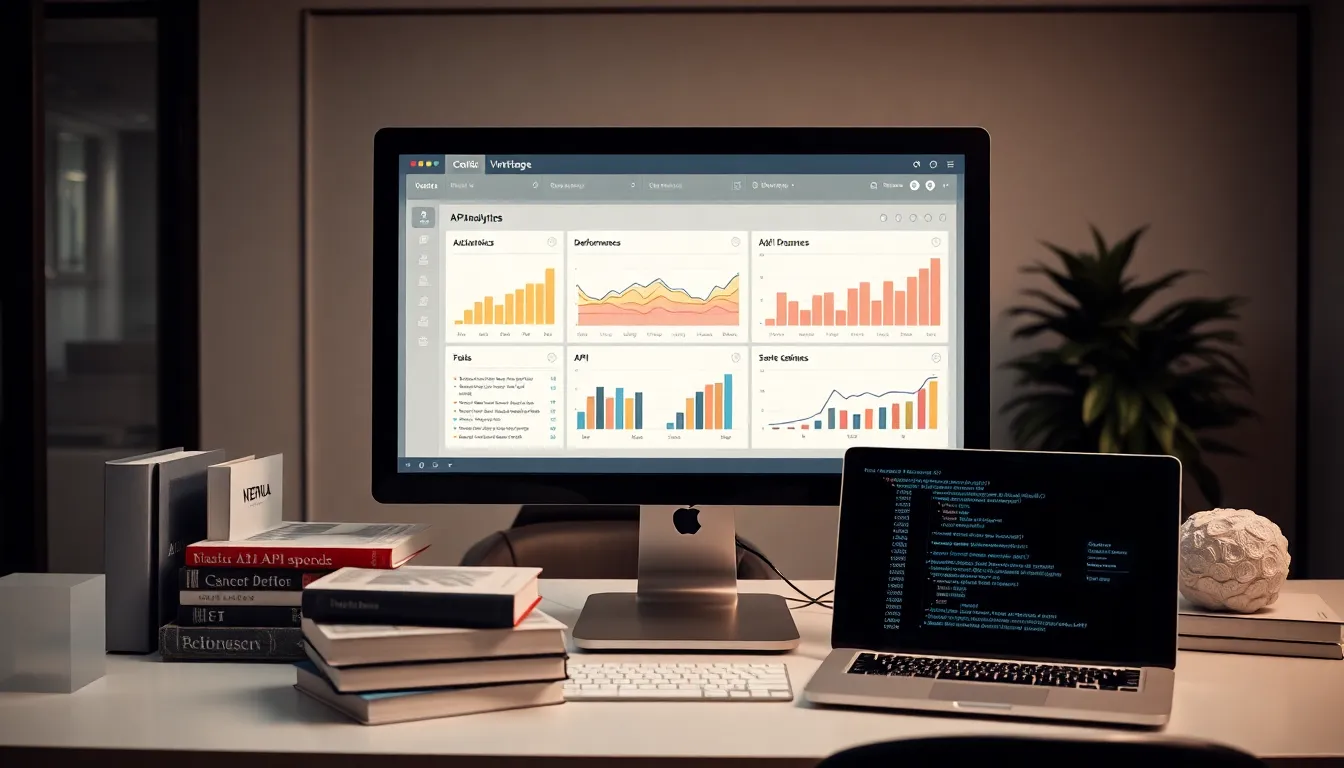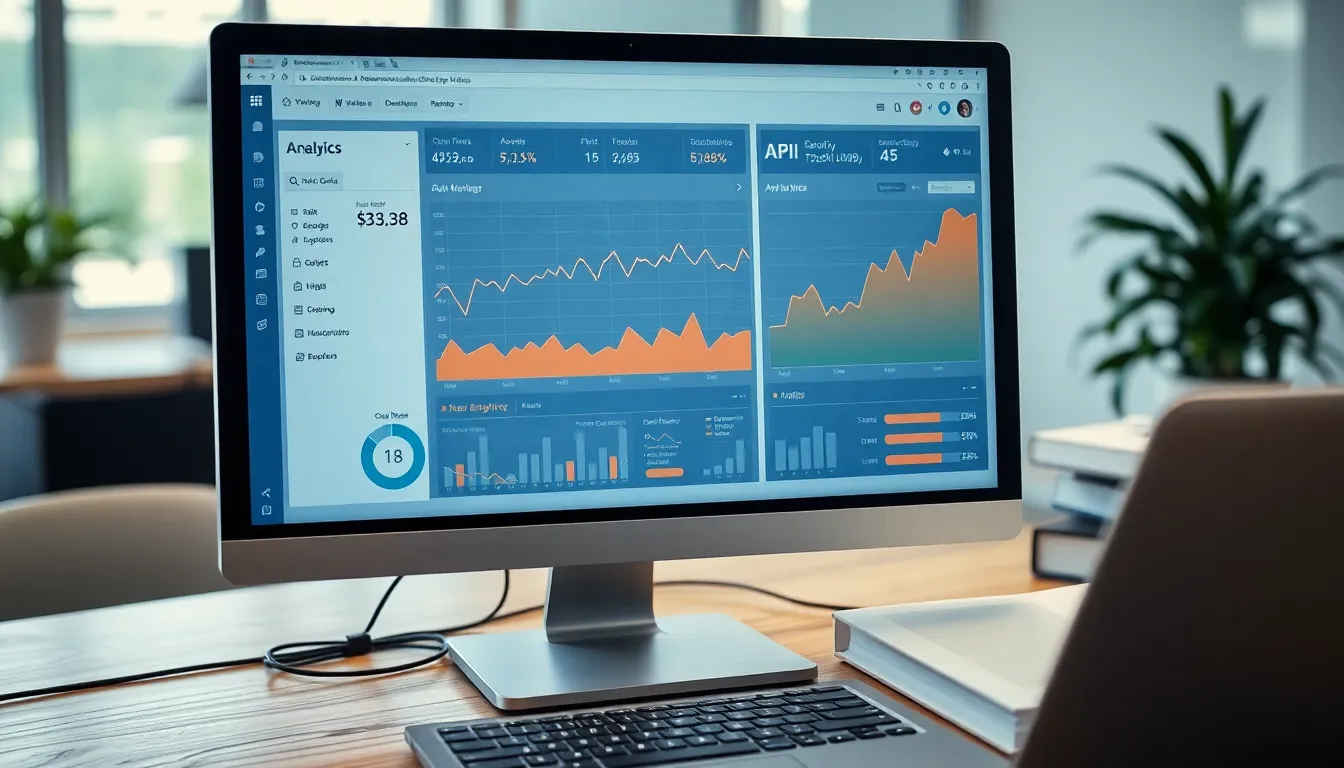In a world where data reigns supreme, API tracking is the unsung hero of digital success. Imagine trying to navigate a bustling city without a GPS—chaotic, right? That’s what businesses face without effective API tracking. It’s the secret sauce that helps them understand user behavior, optimize performance, and keep their digital engines running smoothly.
But wait, there’s more! API tracking isn’t just about collecting data; it’s about making sense of it all. Think of it as having a personal assistant who not only takes notes but also serves up insights with a side of humor. As companies dive into the digital landscape, mastering API tracking can be the difference between a smooth ride and a bumpy road. Let’s explore why this essential tool deserves a spot in every tech-savvy business’s toolkit.
Table of Contents
ToggleUnderstanding API Tracking
API tracking enables businesses to monitor and analyze interactions with their application programming interfaces. This process offers insights into usage patterns and operational efficiency.
Definition of API Tracking
API tracking involves recording and measuring the requests and responses between an application and its API. This functionality allows developers to analyze how APIs are utilized in real time. Tracking encompasses various metrics including response time, error rates, and user engagement. By understanding these elements, organizations make data-informed decisions about their software architecture.
Importance of API Tracking in Modern Applications
API tracking holds significant value for today’s applications. Businesses gain insight into user interactions, identifying trends and patterns that influence app development. Continuous monitoring enhances performance, leading to improved user experiences. Analyzing API data empowers teams to address potential issues proactively, reducing downtime. Additionally, it provides essential information for scaling applications effectively. Data-driven decisions stemming from API tracking facilitate optimization and innovation in digital products.
How API Tracking Works


API tracking involves systematically recording and measuring interactions between applications and their APIs. This process yields critical insights into user engagement and application performance.
Key Components of API Tracking
Monitoring tools play a vital role in API tracking. These tools capture data such as request volume and response times. Data visualization is another core component, providing clear representations of usage trends. Logging mechanisms record detailed information about each API call, which aids in error analysis. Finally, alert systems notify developers of anomalies, enabling them to react promptly to issues.
Common Techniques Used in API Tracking
Rate limiting helps manage the number of requests an API can handle over a specific timeframe. This technique prevents server overload, ensuring reliable performance. Logging requests and responses provides detailed records for analysis, helping teams identify performance bottlenecks. Using analytics dashboards allows developers to visualize key metrics, enhancing decision-making. Additionally, implementing health checks offers continuous assessments of API functionality, promoting timely interventions when problems arise.
Benefits of API Tracking
API tracking delivers crucial advantages for businesses navigating digital complexities. It enhances operational efficiency while providing real-time insights into user interactions.
Improved Performance Monitoring
Performance monitoring improves with effective API tracking. Teams can observe key metrics like response times and error rates, allowing for immediate identification of performance issues. Developers gain access to detailed logs, clarifying the source of problems, which speeds up troubleshooting. Monitoring tools collect data continuously, enabling businesses to analyze usage patterns and shifts in traffic. These insights inform strategies for scalability, ensuring resources align with user demands.
Enhanced User Experience
User experience benefits considerably from API tracking efforts. It helps organizations understand how users interact with their applications, revealing areas that require improvement. By analyzing engagement metrics, developers can fine-tune functionalities and interface designs. Prompt insights lead to faster resolutions of user-reported issues, enhancing satisfaction. Collectively, these efforts create a smoother, more intuitive interaction, fostering user loyalty and encouraging retention.
Challenges of API Tracking
API tracking presents several challenges that organizations must navigate to achieve effective monitoring and analysis.
Data Privacy Concerns
Data privacy concerns emerge as a significant challenge in API tracking. Regulations like GDPR and CCPA impose strict requirements on data handling and user consent. Organizations must ensure that user data collected through APIs aligns with these regulatory frameworks. Failing to prioritize data protection can lead to legal repercussions and damage to reputation. Securing sensitive information during transmission is essential; otherwise, vulnerabilities may expose users to risks. Transparency in data collection practices fosters trust and enhances user confidence.
Technical Implementation Issues
Technical implementation issues frequently hinder effective API tracking. Complexity increases when integrating various monitoring tools with existing software systems. Incompatibilities between tools may lead to gaps in data collection. Performance can also suffer if tracking mechanisms introduce latency, affecting user experience. Additionally, maintaining accurate and scalable logging practices can prove challenging as API usage grows. Teams must also ensure that alert systems provide relevant, actionable notifications rather than overwhelming developers with noise. Addressing these issues is crucial for achieving reliable API tracking without compromising application performance.



